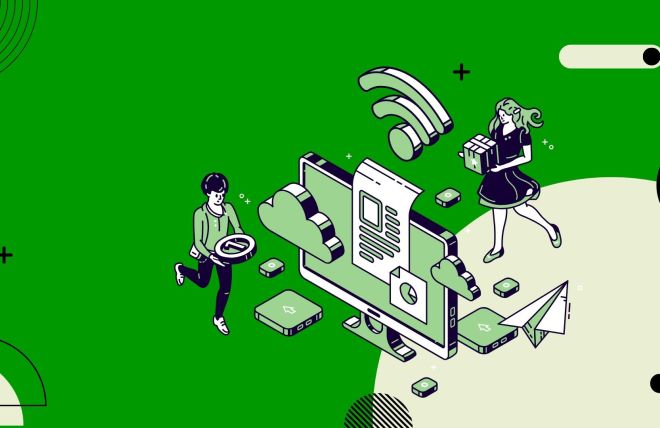A resident portal is no longer just a luxury for homeowners associations (HOAs)—it’s a necessity. Think of it as the virtual heartbeat of your community, where residents and management can connect, collaborate, and simplify the business of daily life. Beyond being a digital amenity, a resident portal enhances communication, streamlines operations, and fosters a sense of unity in your HOA.
Why Your HOA Needs a Resident Portal
What Is a Resident Portal Used For?
A resident portal is a centralized online platform designed to simplify communication and operations for HOA communities. It serves as a hub where residents and management can:
- Access essential documents, such as governing policies and meeting minutes.
- Make online payments for dues and fees.
- Submit and track maintenance requests.
- Reserve shared amenities and facilities.
- Stay informed about community news, updates, and events.
By consolidating these functions into one accessible platform, a resident portal enhances efficiency and fosters a stronger sense of community.
How Does an HOA Portal Improve Communication Among Residents?
A resident portal centralizes all HOA communication, making it easier for residents and management to stay informed. Features like announcements, real-time notifications, and community forums allow residents to:
- Access updates instantly without relying on paper newsletters or emails.
- Participate in discussions and share feedback with neighbors.
- Stay informed about board decisions, upcoming events, and critical community alerts.
This streamlined communication builds trust and fosters transparency across the HOA.
What Security Measures Are Typically Included in an HOA Portal?
Security is a top priority for HOA portals, which often include features such as:
- Data Encryption: Protects sensitive information during transmission.
- Secure Login: Multi-factor authentication and password protection.
- Role-Based Access: Limits access to specific features based on user roles (e.g., residents, board members, or management).
- Audit Trails: Tracks changes and access to ensure accountability.
- Regular Updates: Ensures the portal stays protected against emerging cyber threats.
These measures ensure that residents' personal data and community information remain safe from unauthorized access.
Can an HOA Portal Help Reduce Administrative Tasks for Board Members?
Yes! An HOA portal automates many time-consuming administrative tasks, such as:
- Dues Collection: Streamlines payment tracking and reduces the need for manual follow-ups.
- Maintenance Requests: Allows residents to submit requests online and track their status.
- Document Sharing: Provides instant access to governing documents, reducing the need for individual requests.
- Event Management: Simplifies the process of organizing and managing community events.
By automating these processes, board members and property managers can focus on strategic priorities rather than routine tasks.
How Does an HOA Portal Facilitate the Submission and Tracking of Resident Requests?
A resident portal simplifies the submission and management of requests by offering:
- Online Submission Forms: Residents can submit maintenance requests, architectural changes, or other inquiries directly through the portal.
- Photo Uploads: Allows residents to attach images for better context.
- Real-Time Tracking: Both residents and management can monitor the status of requests.
- Automated Updates: Sends notifications to residents as their requests are addressed.
This system eliminates the need for paper-based processes and ensures timely responses to resident needs.
What Are the Benefits of Using an HOA Portal for Payment Processing?
HOA portals make payment processing seamless and efficient by providing:
- Online Payment Options: Residents can pay dues, fees, and assessments directly through the portal.
- Automated Reminders: Reduces late payments by notifying residents of upcoming due dates.
- Payment History Access: Allows residents to review past transactions and account balances.
- Secure Transactions: Ensures all financial data is protected with encryption and compliance with payment standards.
These features save time for both residents and management, while also reducing errors associated with manual payment collection.
Key Features to Look For
User-Friendly Interface
Choose a platform that is intuitive and easy to navigate, even for less tech-savvy residents.
Robust Communication Tools
Look for options like:
- Announcements and notifications
- Community forums
- Direct messaging between residents and management
Online Payments & Account Management
Ensure the portal offers:
- Secure online payment options
- Automated reminders for dues
- Access to payment history and account balances
Maintenance Request Management
Simplify maintenance workflows with features like:
- Online request submission
- Photo upload capabilities
- Real-time status updates
Amenity Booking & Reservations
Make it easy for residents to:
- Reserve shared spaces and amenities
- View availability in real time
- Receive automatic confirmations
Document Library & Storage
Provide a centralized repository for:
- Governing documents
- Meeting minutes
- Community guidelines
Mobile Compatibility
Ensure residents can access the portal seamlessly from their smartphones and tablets.
Integration with Other Systems
Opt for a platform that integrates with your HOA’s accounting and management software for a seamless experience.
Choosing the Right Resident Portal
When evaluating resident portal providers, consider:
- Cost: Find a solution that fits your HOA’s budget without sacrificing essential features.
- Ease of Use: A user-friendly platform encourages adoption by residents and management alike.
- Customizability: Look for options to tailor the portal to your community’s unique needs.
- Customer Support: Ensure the provider offers reliable support and training resources.
- Security: Prioritize platforms with strong data encryption and privacy protections.
Implementing Your Resident Portal
The success of your resident portal depends on thoughtful implementation. Follow these steps:
- Collaborate with the Provider: Work closely with your chosen vendor to set up the portal and integrate it with existing systems.
- Populate with Relevant Information: Add governing documents, financial reports, and community news to kickstart usage.
- Promote the Portal: Introduce the portal through newsletters, email campaigns, and community meetings.
- Provide Training: Offer tutorials or Q&A sessions to help residents navigate the platform.
- Encourage Feedback: Gather input from users to make improvements and address any concerns.
Conclusion
A resident portal is an investment in your HOA’s future. By embracing technology, your community can enhance communication, streamline operations, and foster a more engaged and connected neighborhood. Whether it’s paying dues online, reserving amenities, or staying informed, a resident portal transforms the way residents and management work together—making your HOA more efficient, transparent, and vibrant.







